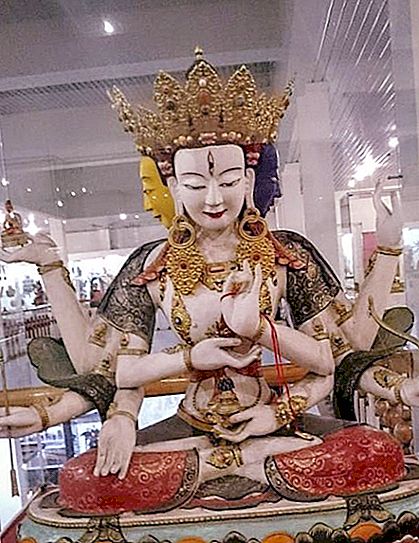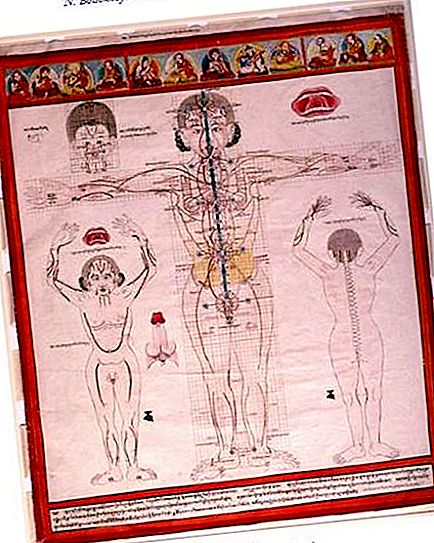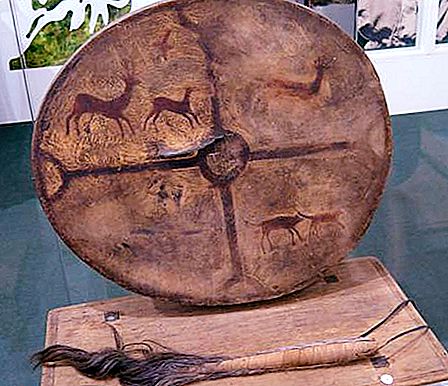The introduction of man to the spiritual and cultural values of his ancestors, the preservation of folk traditions is very important in the modern world. The ideas of globalization, erasing borders and differences are increasingly penetrating the consciousness of people and the practice of everyday life.
The funds of the Museum of History contain valuable collections of materials: archaeological finds and documentary evidence reflecting the life and culture of the peoples of Buryatia.
Compiled numerous catalogs of paleontological collections, archaeological finds, materials on the art of Buryatia of the 18-19 centuries, Buddhist painting, metal artwork, spiritual culture.
Museum exhibits, archaeological finds and historical documents are used for scientific research, for writing articles and dissertations.
The Museum of the History of Buryatia became part of the National Museum, established in 2011.
The building in which the National Museum will be located is still in the design stage.
History of the museum
Museum of the History of Buryatia Khangalov was originally created through the efforts of teachers. Attempts to create even before the revolution.
The first small exhibition was opened in Verkhneudinsk in 1911.
In 1919, at the first meeting of the Society for the Study of the Baikal Region, it was decided to create a museum. The collected historical and archaeological materials paved the way for the decision to create a museum of local lore. But the Civil War prevented.
And only in 1921 a small exposition was opened for visitors.
In 1923, the Verkhneudinsky Museum of Local Lore was established. The need for its creation arose after the Buryat-Mongol Autonomous Soviet Socialist Republic was formed as part of the RSFSR.
Today it is the Museum of the History of Buryatia named after M.N. Khangalov
In the years 1931-32. the building in which the collection was on display was temporarily surrendered to the construction organization, and the display of exhibits was closed.
In 1933, the building was returned, and the exposition was redeployed. In the same year, an anti-religious department was created in the museum.
In 1934, the anti-religious department was transformed into the Anti-Religious Museum, which was placed in the city's Cathedral.
After 1934, persecution of the church began, which affected all religious cults. Together with Orthodox churches, Buddhist datsans were also closed.
At the beginning of the war, due to a lack of funds, the Anti-Religious Department and the museum itself were united and from 1941 to 1990 the exposition was located in the Cathedral. All artifacts from closed datsans were also placed there.
In 1953, the Ministry of Culture of the BMASR was created, and the museum came under its authority.
In 1958, he was named after M. N. Khangalov (1858-1918), an ethnographer, folklorist and teacher, organizer and participant of scientific expeditions to study the life and beliefs of the indigenous population and shamanistic rites. The official name was: Museum of the History of Buryatia named after Khangalov
Museum Collections
The collection of museum exhibits includes materials that reflect the history and culture of Buryatia, starting from the XVII century.
The catalogs are constantly updated with new materials from archaeological and ethnographic expeditions. The Museum of the History of Buryatia contains a huge fund. There are about 100 thousand exhibits telling about life, cultural traditions and religion of the peoples who inhabited this region. The collection includes clothes of hunters, vestments of shamans and shaman attributes: tambourines, masks, amulets and more.

You can admire carvings for Buddhist datsans. See objects of Hunnic culture: arrows, tips and other archaeological finds.

The exhibits presented in the photograph date back to the 3rd century BC.
Buddhist art
The museum has a unique Buddhist collection, which presents objects of worship from the datsans that were closed in the 30s. These items belong to the monuments of world culture. Of interest are Buddhist sculptures made of wood. Here you can see the work of Buryat carvers.
The Buddhist art hall features 40 sculptures by the talented artist Sanji Tsybikov (1877–1934).

One of them is the three-faced goddess of light and long life Ushnishavijaya. Of great value is the collection of rare books.
Atlas of Tibetan Medicine
It is an exact copy of the Atlas, made at the end of the XIX century. Contains 76 paintings made with mineral paints on canvas. Images describe the principles of medicine, indicate specific places of the human body, talk about treatment methods for various diseases. Several paintings detail the acupuncture method.

The Museum of the History of Buryatia in Ulan-Ude is known to the whole world largely due to this rare exhibit. In 1998, while displaying the museum’s collection in the United States, the Atlas was valued at $ 2 million.
Life and clothes
The collection of applied and jewelry art includes various decorations of outerwear, horse equipment, weapons, smoking accessories, religious objects.
Among the exhibits of the museum are household items and clothing, jewelry of ethnic groups of people who lived in Buryatia. Here you can see the interiors of the Buryat yurt and the Russian hut, get an idea of the traditions and way of life of the peoples who inhabited this region.
Documentary Collections
The Museum of the History of Buryatia keeps the annals of the ancient tribes of the Khori-Buryats, decrees of chancelleries, which track the history of the region and the lives of people. The collection contains historical documents, nominal and Duma seals of the 19th century, by which one can judge the lifestyle and economic activities of people of that time.
Exposition of Buryat shamanism
Shamanism is an ancient cult that existed among many nations of the world. Three religions historically peacefully coexisted on the territory of Buryatia: shamanism of the peoples of the north, Buddhism of China and Mongolia, and Orthodox Christianity.
The Museum of the History of Buryatia named after Khangalov has a unique collection of shamanistic paraphernalia and shamanic folklore.

It presents objects of Buryat shamanism: shamanic masks and ancient amulets, mirrors and costumes, totems and shamanistic tambourines of the XVII - XIX centuries.




